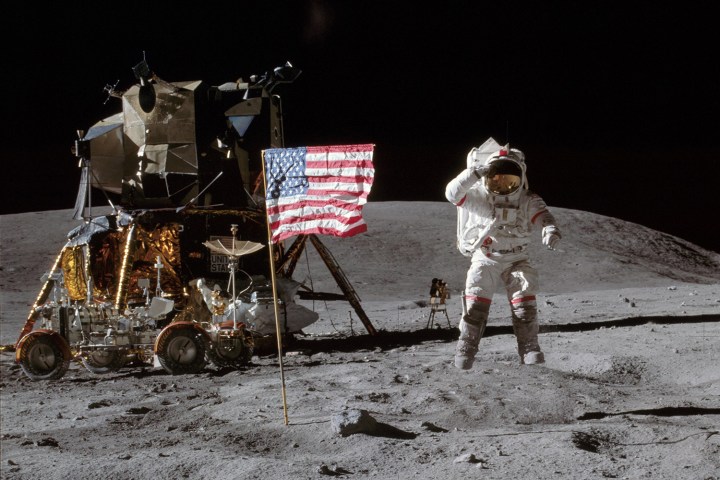
The signing of Space Policy Directive-1 at the White House on Monday, December 11 authorizes NASA to focus efforts on a moon landing, reinforcing a unanimous recommendation by the new National Space Council, chaired by Vice President Mike Pence, in October 2017.
You may be asking, “So what happened to Mars?” after so much bold talk in recent years of manned missions to the red planet. Well, plans to embark on that ambitious journey certainly haven’t been abandoned, with the moon trip expected to lay the foundations for a future mission to the faraway planet.
“The directive I am signing today will refocus America’s space program on human exploration and discovery,” President Trump said on Monday. “It marks a first step in returning American astronauts to the moon for the first time since 1972, for long-term exploration and use.”
Trump added, “This time, we will not only plant our flag and leave our footprints — we will establish a foundation for an eventual mission to Mars, and perhaps someday, to many worlds beyond.”
Vice President Pence insisted America will “lead in space once again on all fronts,” adding, “Space is the ‘next great American frontier’ and it is our duty — and our destiny — to settle that frontier with American leadership, courage, and values.”
Despite the ambitious proclamations, details for the moon mission — or missions — are currently thin on the ground. It’s not yet clear what kind of funding NASA will receive, or whether it will partner with private outfits like SpaceX to expedite the plan. And there was no mention of a timeline for a manned mission to the moon, or indeed to Mars.
NASA nevertheless said it was looking forward to “supporting the president’s directive, strategically aligning our work to return humans to the moon, travel to Mars, and opening the deeper solar system beyond.”
Trump signed the directive in front of a small group of dignitaries, among them NASA astronauts Sen. Harrison “Jack” Schmitt, who landed on the moon 45 years to the minute that the policy directive was signed, Buzz Aldrin — the second human to set foot on the moon back in 1969, Peggy Whitson, the current holder of the record for the longest time (665 days) spent in space by a U.S. astronaut, and Christina Koch, a member of NASA’s astronaut class of 2013.
The White House directive intensifies a new space race between the U.S., China, and Japan to return humans to the moon. Both Asian countries in 2017 outlined separate plans for moon missions. Japan appears to be looking at 2030 for a trip to the lunar surface, while China has outlined plans for a mission soon after that. We’ll have to wait for more details from the U.S. government to find out if it has any hope of getting there sooner.
Editors' Recommendations
- NASA’s Artemis moon astronauts suit up for mission practice run
- NASA’s high-tech lunar backpack aims to map surface of moon
- NASA calls off second try at moon rocket launchpad test
- See NASA’s new SLS moon rocket on its way to the launchpad
- How to watch NASA slowly roll its moon rocket to launchpad


